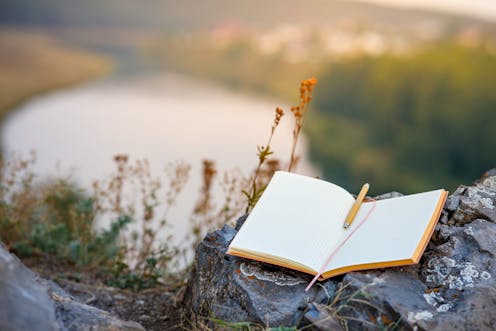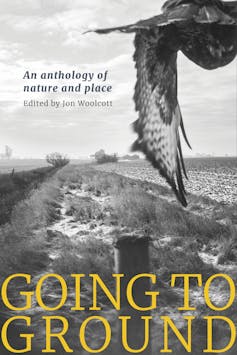
We live in an age of climate emergency and eco-anxiety. This is, after all, the Anthropocene – a geological period defined by the bootprint of humans on Earth. Bearing witness to our place in the world is critical now more than ever but writing about nature during an eco-crisis without implying utter despair is a challenging feat.
Since 2009, I have taught a Masters in wild writing that explores literature, landscape and the environment. Students are encouraged to find their own path – creative and critical – into the ways we as humans engage with the natural world, the places we inhabit and the creatures we share the Earth with. Field trips – the outdoor classroom – are a central part of the practice of study. We are of nature, we remind ourselves – never separate, never apart, not even in the square construct of the seminar room. To exist as a human is to be in nature. Nature is not somewhere we step in and out of. That is a vital truth.
Since that course first launched, writing about nature has evolved. In 2008, journalist Jason Cowley acknowledged that the genre of nature writing was undergoing a transformation. In a special issue of the literary magazine, Granta, dedicated to new nature writing, he explained that “the best new nature writing is an experiment in forms: the field report, the essay, the memoir, the travelogue”.
Going to Ground: An anthology of nature and place, edited by nature writer Jon Woolcott, is a fine collection of just such writing. Genuinely engaging, the collective of more than 30 new and established writers offer bright, fresh voices on our sense of place, our place in nature.

The pieces gathered here – both prose and poetry – are all tales of the Anthropocene. They tell of scarred lands, sacred lands. They saw light first in the previous decade as offerings for The Clearing – an online magazine that helped promote fresh perspectives on nature writing, including portraits of the post-industrial alongside political and reflective musings on our modern landscapes.
These are visions first seen in earlier works such as Richard Mabey’s The Unofficial Countryside (published in 1973), which, according to legendary landscape writer and wanderer Iain Sinclair, was “the unacknowledged pivot between the new nature writers and those others, of a grungier dispensation, who are randomly (and misleadingly) herded together as ‘psychogeographers’”. Sinclair should know – being one of the best known of that herd.
The contributions to Going to Ground read as a series of stepping stones – fitting for an anthology largely framed around the archipelago of our isles. Writer Graham Mart takes us to a “landscape draining of its purpose”, tracing generations of elders through the moor towns of North Yorkshire – Settle, Hawes, Muker – seeing the natural in the industrial. He writes poetically about “dippers on the beck/ limestone crags dotted with juniper”.
Like so many of these writings, a mosaic of memories emerges that is patched together from the land.
JC Niala takes us beyond Britain to Kenya where ancient human cave dwellers lived “an intricate dance with the elephants” that came to those dark spaces at night to mine salt with their tusks. The magic in that vision helps Niala clear the ghost of COVID haunting her journey.
Two of the greats of the new nature writing movement are present here, too. Kathleen Jamie’s Findings (2005) stepped between the quotidian world of domesticity, of laundry and kids’ school runs and soaring moments of enchantment in nature. Here, in Going to Ground, Jamie guides us to the value of paying heed, attending, noticing the natural world. “How do we lose the world?” she questions. “Little by little.”
Instead of ignoring the world around us, we can “seriously notice” – step outside and “smell autumn in the wind”. By doing so, we move beyond being passive consumers in “the simplest act of resistance and renewal”. Be engaged, be present, she urges.
In a chapter titled Bird Island, writer and birder Tim Dee watches gannets preparing to launch from “the edge of their earthly domain, the grit-and-guano trampled runway to the sky”. This image works well as a metaphor for the efforts of this fine band of nature writers gathered in this delightful anthology – each one seeking to step beyond exhausted stamping grounds, sensing the need for fresh perspectives on the landscapes of the Anthropocene.

Don’t have time to read about climate change as much as you’d like?
Get a weekly roundup in your inbox instead. Every Wednesday, The Conversation’s environment editor writes Imagine, a short email that goes a little deeper into just one climate issue. Join the 30,000+ readers who’ve subscribed so far.
James Canton does not work for, consult, own shares in or receive funding from any company or organisation that would benefit from this article, and has disclosed no relevant affiliations beyond their academic appointment.
This article was originally published on The Conversation. Read the original article.







